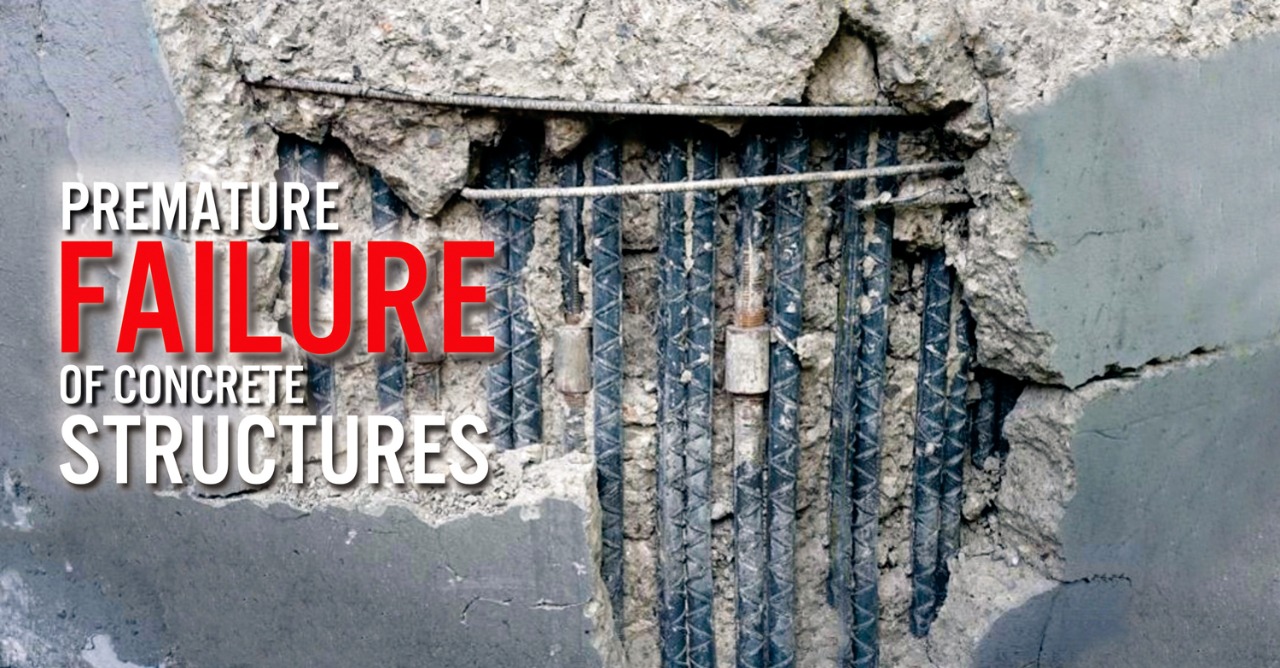In concrete structures, concrete is reinforced with Thermo-Mechanically-Treated (TMT) iron rod because it is brittle in nature and cannot easily withstand tensile and shear stresses caused by wind, earthquakes, vibrations and other forces. Hence, the high yield strength and the ductility of the TMT iron rod work together with the concrete to make it very solid and unwavering in order to sustain these stresses.
However, concrete structures usually fail prematurely if proper care and attention is not given to it. Structural failure is the inability of a concrete structure to meet up with its intended performance, response and behavior under all expected environmental conditions; it shows its ugly head in form of unwanted deformations, cracking, spalling, severe honeycombing, displacement of supports and eventual collapse.
Some of the factors often responsible for the failure are use of inferior iron rods, corrosion, insufficient reinforcement, exposure to extreme temperature, structural damage, fire hazard, seismic damage, weather exposure, chemical damage and others. These factors are either environmental or production-induced.
Structural failures of concrete structures often imply large and unwanted deformations, severe honeycombing and cracking with spalling, relative displacement of supports and ultimate collapse.
Construction Factors
These are factors that often arise from the shoddy work done from the design stage to construction phase. They range from wrong selection of concrete materials, use of improper construction techniques, errors in design calculation to other minor issues.
- Wrong selection of materials
Construction projects are built with the ultimate aim providing safety to the users apart from other purposes they are intended to serve. Hence, to meet safety requirements, construction projects must be very strong, and to achieve this, the construction process must be executed in accordance with established codes and specifications.
This should start from the selection of the right materials that meet quality standards. Selection of the wrong and unsuitable materials means that the materials will not meet the soil conditions and other specifications, and this will affect the strength and strength of the construction and could eventually cause it to fail.
- Poor quality control and wrong construction technique
If there is poor or insufficient quality control, lack of good supervision on and off the construction site during the construction phase, or employment of wrong construction control, several structural defects and other red flags that affect the performance of the concrete structure and cause it to fail will spring up.
- Design calculation and detailing errors
After conducting design calculation, there should be proper check of the process to check the sizes of the section of the reinforced concrete as well as its thickness, reinforcement spacing and sizes are sufficient to provide support to the load combinations. This should cover the stability of the structure, its serviceability and robustness.
If this is not done and errors surface, it may lead to unsavory defects that will require costly structural repair.
Accurate, correct, robust and efficient arrangement should be used for the structure. Water should be prevented from staying on the structure to avoid deterioration and cracking.
More so, there should be strict adherence to established code specifications regarding reinforced concrete elements.
- Placement of iron rod
Iron rods should be placed in a way that they will be adequately protected by concrete. Failure to do this means that the iron rods will be left unprotected and this may lead to failure after they are completely loaded.
- Bad construction joints
Construction joints must be properly constructed, if not, moisture will easily penetrate the concrete. To avoid this, there should be good compaction and adequate preparation.
Other production factors that cause premature failure of concrete structures include excessive water content, inadequate reinforcement cover, and poor concrete mixture.
Environmental Factors
These are chemical attacks and other factors caused by natural factors that affect the strength of concrete structures. Some of them are carbonation, chloride, Alkali silica reaction, acids and sulfate.
- Carbonation
Carbonation occurs when carbon dioxide from the air penetrates the concrete and reacts with hydroxides, such as calcium hydroxide, to form carbonates.
When iron rod is cast into fresh concrete, it is cast into a highly alkaline environment. As the concrete sets, a passivating layer of iron oxide forms around the rebar effectively protecting it from corrosion. Problems occur when the alkalinity of the surrounding concrete is lost, that is, when the concrete becomes carbonated. When the carbonation front reaches the iron rod, the passive layer is broken down and the iron rod will corrode if sufficient oxygen and moisture are present.
The extent to which carbonation is a problem on any particular structure is down to a number of factors, such as the quality of concrete, the depth of concrete cover over the iron rod, and the environmental conditions.
- Chloride Attack
Exposure of reinforced concrete to chloride ions is the primary cause of premature corrosion of iron rod reinforcement. The intrusion of chloride ions, present in deicing salts and seawater, into reinforced concrete can cause corrosion of iron rod if oxygen and moisture are also available to sustain the reaction. Chlorides dissolved in water can permeate through sound concrete or reach the steel through cracks. Chloride-containing admixtures can also cause corrosion. The other major cause of reinforcement corrosion is chloride attack. Chloride may be present in the concrete because it was cast into the concrete as an accelerator, because it has entered the concrete via the use of de-icing salts or from a chloride rich coastal environment.
Once chloride ions have reached the steel in sufficient quantity they can initiate corrosion cells, even in alkaline concrete.
Source: Tiger TMT




